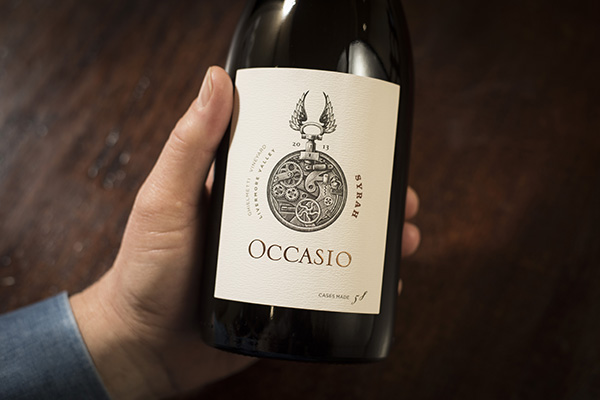Syrah – a case study in oxygen management

In my Introduction to Winemaking Class at Las Positas College, I spend an entire lecture on oxygen management during fermentation. Oxygen management is a crucial aspect of winemaking that is often glossed over. Performed properly and the wine flavors, aromas, and textures have a chance to develop. Improper oxygenation, on the other hand, can leave the wine reduced (sulfurous), oxidized, or turned to vinegar.
Syrah is one of the noble varieties. It has so much to offer – brilliant color, fruit and floral flavors, elegant aromas, and deep and complex structure. But Syrah’s nobility can be hard to coax out, as it is prone to reduction.
What is reduction? Reduction produces off-odors by facilitating the formation of sulfur compounds during fermentation. These compounds are formed from precursor molecules that are naturally in the juice – like cysteine and S – methyl methionine. In trace amounts, these compounds can add complexity to the wine. However, stressful ferments caused by a lack of oxygen or nutrient deficiency will produce excess quantities of these compounds, leaving the wine smelling of cabbage, rotten egg, or road tar.
Dimethyl sulfide (DMS) is one of the molecules that can be formed during fermentation. Unfortunately, the precursor to DMS is particularly abundant in Syrah, which is why successful vinification of this varietal can be tricky. Syrah, perhaps more than any other variety, requires careful attention to oxygen management throughout vinification, aging, and bottling.
Oxygenation is critical for inhibiting reduction during fermentation. In addition to creating a less stressful environment for the yeast, oxygen converts wine polyphenols to quinones – molecules that trap the sulfurous compounds and remove their odor. Polyphenols are compounds like anthocyanins (responsible for the color of the wine) and tannins. Too little oxygen and there won’t be enough quinones to do the job; too much oxygen and the wine can oxidize. Proper oxygen management is a careful balance between reduction and oxidation – a dance that is aided by science but perfected with practice.
We ferment Syrah in open bins and compliment vigorous punch downs with once per day aerative pump overs using an oxygen sparger on the nozzle. By encouraging oxygenation in our Syrah during the most active period of fermentation we aren’t compromising color or sensory characteristics of the wine.
Oxygen management does not end with fermentation. Sulfurous product precursors remain at some level in the wine. We take care to avoid reductive conditions that might lead to their formation during aging. First, we store the pressed wine in steel tanks and allow the heavy lees (dead yeast) time to settle to the bottom. Only then is the wine transferred to the barrel. Second, we avoid the formation of a fine lees bed in the barrel by an early first racking after about three months. This is the opposite of Chardonnay, where resting on the lees is a Burgundian tradition.
Our understanding of Livermore Valley Syrah improves with each vintage, and so, too, does our practice of oxygen management. I think this understanding shows with each vintage, none more than in our 2017 Founder’s Syrah, which will be released later this month. I believe this is the closest we have come to that perfect balance of fruit and complexity and shows the true potential of Livermore Valley Syrah.
2017 Founder’s Syrah, Ghielmetti Vineyard, Livermore Valley
78 cases made
Release Date: March 20, 2021


